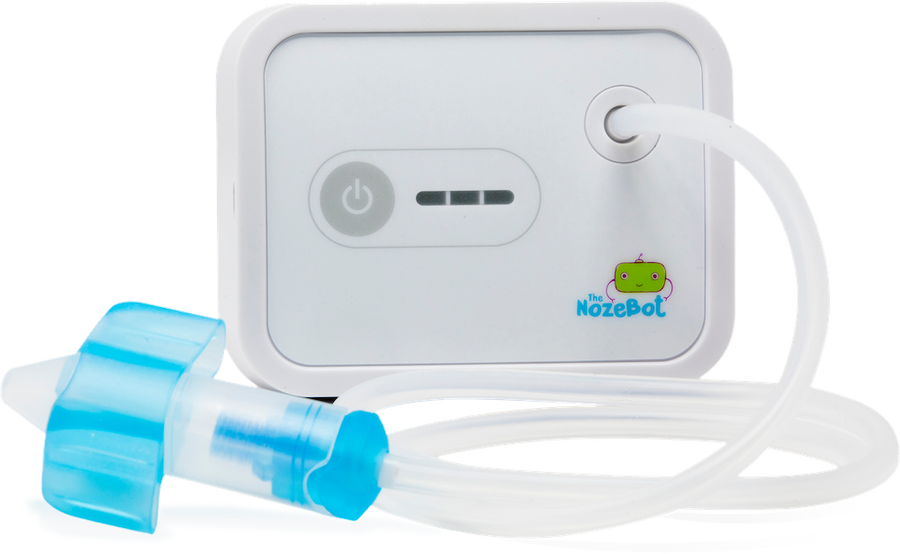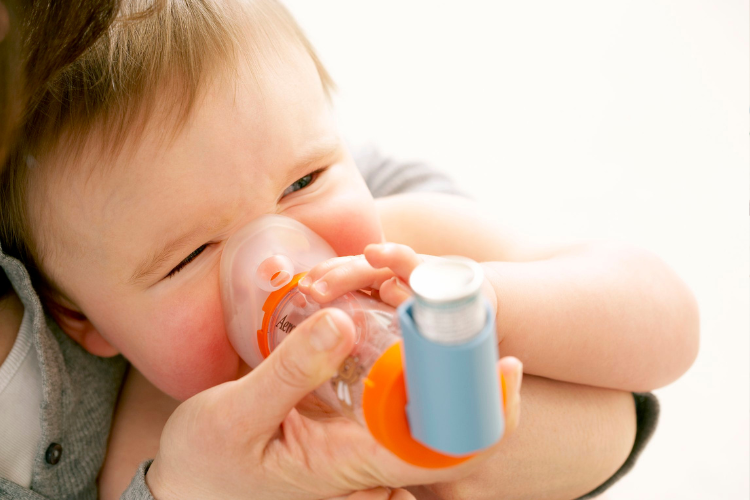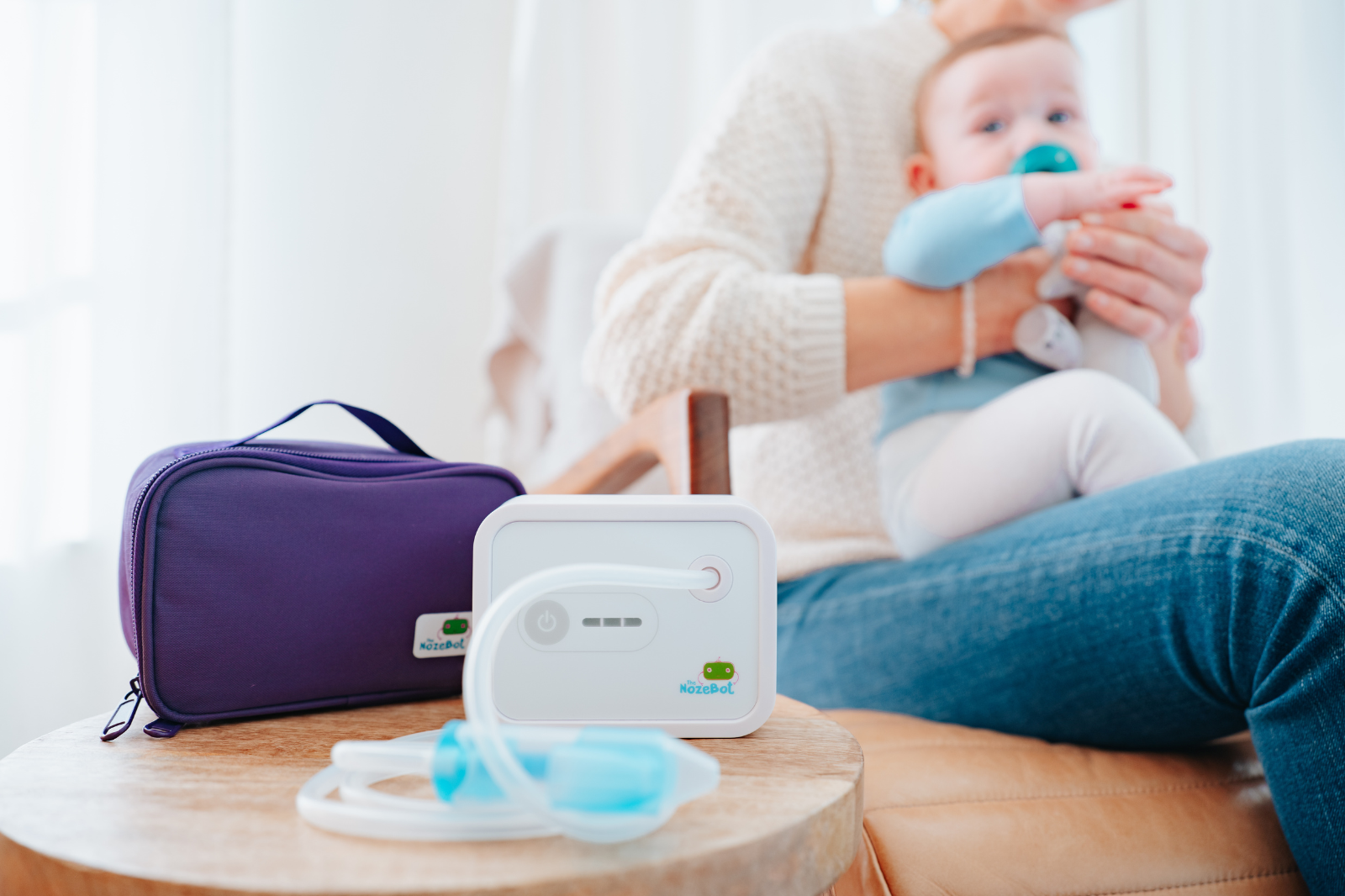Guest Post by Katy Fleming, MA, LPC, BSN, RN
Respiratory syncytial virus (RSV) rates continue to surge during these cold months. RSV infects nearly every child by their 2nd birthday.
Once the cold-like symptoms begin, additional problems may arise including more severe infections.
Learn about potential complications after contracting RSV to protect you and your little ones.

5 Things to Watch Out For After Having RSV
Dr. Steven Goudy, Pediatric ENT and inventor of the NozeBot shares insight on secondary issues to look out for after your child has RSV.
Let’s talk about the 5 medical complications to watch out for after your child has RSV.
1. Ear Infection
This virus weakens the immune system and causes inflammation.
When respiratory viruses cause inflammation, blockage prevents the eustachian tubes from draining properly. The clogged tubes lead to an infection of the middle ear fluid.
The eustachian tube is a small tube connecting the middle ear to the back of the throat. It has a vital role in draining fluid from the middle ear.
Children often experience ear infections in the weeks following respiratory infections such as RSV.
When your little one contracts RSV, monitor for a high fever (100.4°F or higher) and ear pain. Infants may have difficulty sleeping, tug at their ears, or remain fussy when experiencing an ear infection.
Lower the risk of RSV causing an ear infection by reducing the snot. The NozeBot Nasal Aspirator is a hospital-grade suction designed to easily clear nasal congestion in tiny noses.

2. Sinus Infection
A telltale sign of RSV is a constant runny nose. The mucus build-up and inflammation caused by RSV can lead to a sinus infection.
Sinuses are air-filled cavities in the forehead, nose, and cheeks. While struggling with congestion and snot caused by RSV, these cavities can swell and fill with fluid. Sinus infections cause facial pressure, headaches, ear pressure, and bad breath.
When your kiddo has RSV, watch for thick yellow drainage from their nose and high fever to assess for a sinus infection.
3. Orbital Cellulitis
In addition to sinus infections, the inflammation associated with RSV can cause inflammation and infection of the tissue surrounding the eyes.
Referred to as orbital cellulitis, it can occur when the sinuses can’t drain causing swelling and redness around the eyes.
If left untreated, orbital cellulitis can cause vision loss and other serious complications. Antibiotics are typically prescribed and the sinuses may require surgical drainage.
4. Pneumonia
RSV is the most common cause of pneumonia in children younger than one-year-old. When the virus spreads to the lungs, inflammation and infection begin causing the air sacs to fill with fluid and pus.
Excessive coughing, wheezing, and fever are signs of pneumonia. If your child has difficulty breathing or a barking cough, the infection has affected the lungs.
This is a potentially serious complication and may require hospitalization for breathing treatment, IV fluids, or oxygen therapy.
If your child is having difficulty breathing or presents with blue-colored lips, seek emergency medical attention.
5. Asthma
Developing an infection with RSV early in life may increase the risk of later developing asthma.
One study found that children infected by RSV in infancy had a 26% higher risk of developing asthma by age 5. These researchers believe 15% of asthma cases are preventable by avoiding RSV in infancy.
The best preventative measure against RSV is immunization. The CDC recommends an antibody immunization for babies under eight months old.
An RSV vaccine is now available for pregnant mothers to protect their babies up to 6 months after birth. Most infants do not require immunization if their mother received the vaccine at least 14 days before delivery.
Unfortunately, the RSV immunization is currently in limited supply. Infants at a higher risk for serious illness, such as weighing less than 11 lbs, are prioritized. If you are pregnant, talk to your doctor about the RSV vaccine available to women between 32-36 weeks of pregnancy.

Looking for more Doctor-approved tips? You’ll love these:
- 5 Things to Do Immediately When Your Baby Gets the Flu
- How is Laryngomalacia Diagnosed and Treated?
- What Parents Need to Know About Ear Fluid After an Ear Infection
- 5 Things to Know About Nasal Hygiene
- Who Should Get the New RSV Vaccine?
Set an appointment with your child’s pediatrician to discuss preventative measures against RSV. If your little one is experiencing symptoms of RSV, monitor for signs of a secondary infection.
As a licensed counselor and registered nurse, Katy approaches freelance writing with years of experience and a unique perspective. Alongside her partner, Katy loves to travel the world and embrace other cultures from volcanoes in Iceland to villages in India.
The Nozebot is a battery-powered suction device designed to clear nasal congestion in babies and children.


